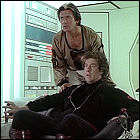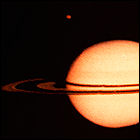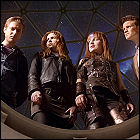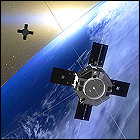The Severe Local Storms Warning Service
 Formerly the Weather Bureau-Army-Navy Severe Weather Unit, the recently-renamed Severe Local Storms Warning Service (SELS) relocates from Washington D.C. to Kansas City, Missouri. The new location puts the SELS closer to the American midwest, a hotbed of severe weather during the spring months, as well as placing it in close proximity to a major telecommunications hub (at this point, the SELS is reliant almost entirely on teletype transmissions). Additionally, precise definitions of what constitutes a severe thunderstorm (winds in excess of 50mph, wind gusts in excess of 75mph, and hail in excess of an inch in diameter) are established, as well as a concerted effort to target its weather bulletins to more precise geographic regions.
Formerly the Weather Bureau-Army-Navy Severe Weather Unit, the recently-renamed Severe Local Storms Warning Service (SELS) relocates from Washington D.C. to Kansas City, Missouri. The new location puts the SELS closer to the American midwest, a hotbed of severe weather during the spring months, as well as placing it in close proximity to a major telecommunications hub (at this point, the SELS is reliant almost entirely on teletype transmissions). Additionally, precise definitions of what constitutes a severe thunderstorm (winds in excess of 50mph, wind gusts in excess of 75mph, and hail in excess of an inch in diameter) are established, as well as a concerted effort to target its weather bulletins to more precise geographic regions.

 British broadcaster ABC airs the tenth episode of science fiction anthology series Out Of This World. Adapted by Denis Butler from Frank Crisp’s novel Ape Of London, the story is introduced by Boris Karloff. This episode no longer exists in the archives.
British broadcaster ABC airs the tenth episode of science fiction anthology series Out Of This World. Adapted by Denis Butler from Frank Crisp’s novel Ape Of London, the story is introduced by Boris Karloff. This episode no longer exists in the archives. In a hand-written design document, Ralph Baer, an engineer working for defense contractor Sanders Associates, sketches out his ideas for a device he calls a TV Gaming Display. The design proposal lays out a concept to take television from being a passive form of entertainment to an interactive one in which two players can manipulate simple on-screen displays to play various games. Management at Sanders recognizes the potential of the invention, and Baer proceeds with development of the first video game prototypes, one of which becomes the basis for the first home video game console, the
In a hand-written design document, Ralph Baer, an engineer working for defense contractor Sanders Associates, sketches out his ideas for a device he calls a TV Gaming Display. The design proposal lays out a concept to take television from being a passive form of entertainment to an interactive one in which two players can manipulate simple on-screen displays to play various games. Management at Sanders recognizes the potential of the invention, and Baer proceeds with development of the first video game prototypes, one of which becomes the basis for the first home video game console, the  The tenth episode of the spy-fi series Adam Adamant Lives! airs on BBC1, starring Gerald Harper and Juliet Harmer.
The tenth episode of the spy-fi series Adam Adamant Lives! airs on BBC1, starring Gerald Harper and Juliet Harmer. ITV airs the 20th episode of Ace Of Wands, starring Michael McKenzie, Tony Selby and Judy Loe. This episode, like the rest of the series’ first two seasons, is now missing from the archives.
ITV airs the 20th episode of Ace Of Wands, starring Michael McKenzie, Tony Selby and Judy Loe. This episode, like the rest of the series’ first two seasons, is now missing from the archives.
 The unmanned space probe Pioneer 11 makes its closest approach to the planet Saturn, the first man-made object to visit the ringed planet. Scientists pay careful attention to Pioneer’s transmissions as it passes between Saturn’s clouds and its rings, watching for signs of damage (or worse) resulting from collision with the tiny particles that are predicted to exist there; Pioneer 11 slides past Saturn at a distance of only 12,800 miles from the planet’s cloudtops. This is Pioneer 11’s last planetary stop.
The unmanned space probe Pioneer 11 makes its closest approach to the planet Saturn, the first man-made object to visit the ringed planet. Scientists pay careful attention to Pioneer’s transmissions as it passes between Saturn’s clouds and its rings, watching for signs of damage (or worse) resulting from collision with the tiny particles that are predicted to exist there; Pioneer 11 slides past Saturn at a distance of only 12,800 miles from the planet’s cloudtops. This is Pioneer 11’s last planetary stop. The
The  GNP Crescendo releases a CD of Scott Gilman’s music from the
GNP Crescendo releases a CD of Scott Gilman’s music from the  TNT airs the
TNT airs the  Celebrating 40 years of Doctor Who,
Celebrating 40 years of Doctor Who,  The 787th episode of Doctor Who airs on BBC1 (the 89th episode since the series’ revival).
The 787th episode of Doctor Who airs on BBC1 (the 89th episode since the series’ revival).  The Radiation Belt Storm Probes mission launched by NASA begins activating sensors just a few days after liftoff, weeks ahead of schedule, just in time to reveal a finding that forces a rethink of over half a century of widely-accepted science. The probes find that, in response to the recent eruption of a solar prominence, the two Van Allen radiation belts discovered in 1958 by Explorer 1 have expanded to include a third belt, which traps and repels additional solar radiation back into space. The third radiation belt dissipates after four weeks, and scientists begin rethinking their theories on Earth’s magnetosphere.
The Radiation Belt Storm Probes mission launched by NASA begins activating sensors just a few days after liftoff, weeks ahead of schedule, just in time to reveal a finding that forces a rethink of over half a century of widely-accepted science. The probes find that, in response to the recent eruption of a solar prominence, the two Van Allen radiation belts discovered in 1958 by Explorer 1 have expanded to include a third belt, which traps and repels additional solar radiation back into space. The third radiation belt dissipates after four weeks, and scientists begin rethinking their theories on Earth’s magnetosphere. Disney+ streams the fourth episode of the Marvel animated series What If…?, featuring the voices of Jeffrey Wright (Westworld), Benedict Cumberbatch (Doctor Strange), and Rachel McAdams (Doctor Strange).
Disney+ streams the fourth episode of the Marvel animated series What If…?, featuring the voices of Jeffrey Wright (Westworld), Benedict Cumberbatch (Doctor Strange), and Rachel McAdams (Doctor Strange).